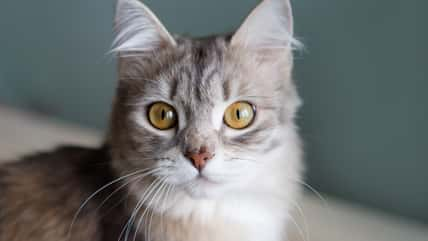A Cloned Black-Footed Ferret Gave Birth, Marking The First Time A Cloned Endangered Species Has Produced Offspring

For the first time, a clone of an endangered species of ferrets has given birth to babies. The mother is a black-footed ferret named Antonia.
She was the clone of another ferret named Willa, whose genetic material and tissue samples were collected in 1988. Her DNA has been kept at the San Diego Zoo’s Frozen Zoo.
Compared to the current population of black-footed ferrets, Willa was genetically diverse. Scientists hope that cloning her genetic material will boost the species’ chances of survival.
“The successful breeding and subsequent birth of Antonia’s kits marks a major milestone in endangered species conservation,” said Paul Marinari, the senior curator at the Smithsonian Institution’s National Zoo and Conservation Biology Institute in Front Royal, Virginia.
Black-footed ferrets are also known as American polecats or prairie dog hunters. They are one of the most endangered mammals in the United States.
A combination of habitat loss, diseases such as the sylvatic plague, and a lack of prairie dogs, which are their main food source, contributed to their decline.
The ferrets were once considered extinct in the wild, but in the early 1980s, a small population was rediscovered in Wyoming. Since then, conservationists have helped the species recover through traditional breeding programs and cloning.
All living black-footed ferrets, aside from the clones of Willa and their newborn babies, are descendants of the last seven individuals that were found in the wild.
As a result, the remaining population is not very genetically diverse. This poses a problem because inbreeding can make the species more susceptible to disease and reduce its ability to adapt to different environments.

Kerry Hargrove – stock.adobe.com – illustrative purposes only, not the actual ferret – pictured above a black-footed ferret looks at the camera
In 2020, conservationists successfully aided in the birth of a black-footed ferret named Elizabeth Ann. She was the first clone of Willa.
Willa never had any offspring throughout her lifetime, so her clones provide much-needed genetic variety for the species’ limited population. Unfortunately, Elizabeth Ann is unable to reproduce due to a condition with her uterus.
Earlier this year, conservationists cloned Willa two more times. They produced two new clones named Noreen and Antonia.
After mating with a male named Urchin, Antonia has given birth to three kits. One died immediately after birth, but the other two, a male and a female kit, are healthy.
“This marks the first time a cloned U.S. endangered species has produced offspring, showcasing a critical step forward in using cloning to enhance genetic diversity in conservation efforts,” said the U.S. Fish and Wildlife Service (FWS).
Antonia and her kits will continue living at the National Zoo and Conservation Biology Institute. Unlike other non-clone offspring from the breeding program, they will not be released into the wild.
Between 150 and 220 ferrets are released into the wild each year. Specific reintroduction sites for black-footed ferrets are located across Wyoming, Montana, South Dakota, Arizona, Utah, Colorado, Kansas, and New Mexico.
Sign up for Chip Chick’s newsletter and get stories like this delivered to your inbox.
More About:Animals





